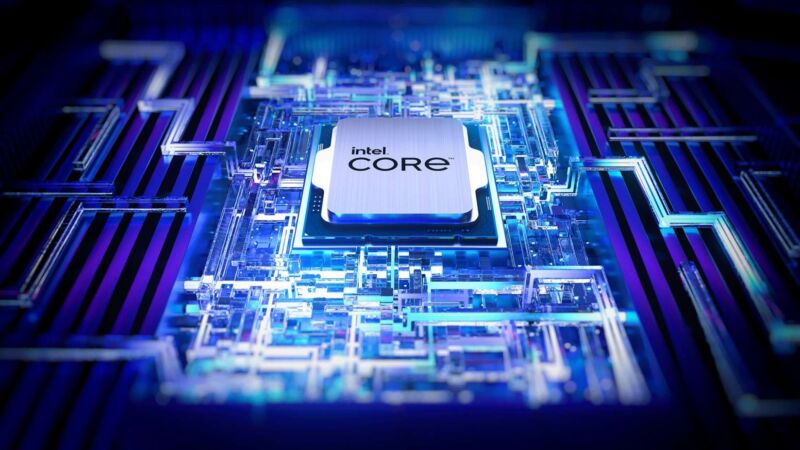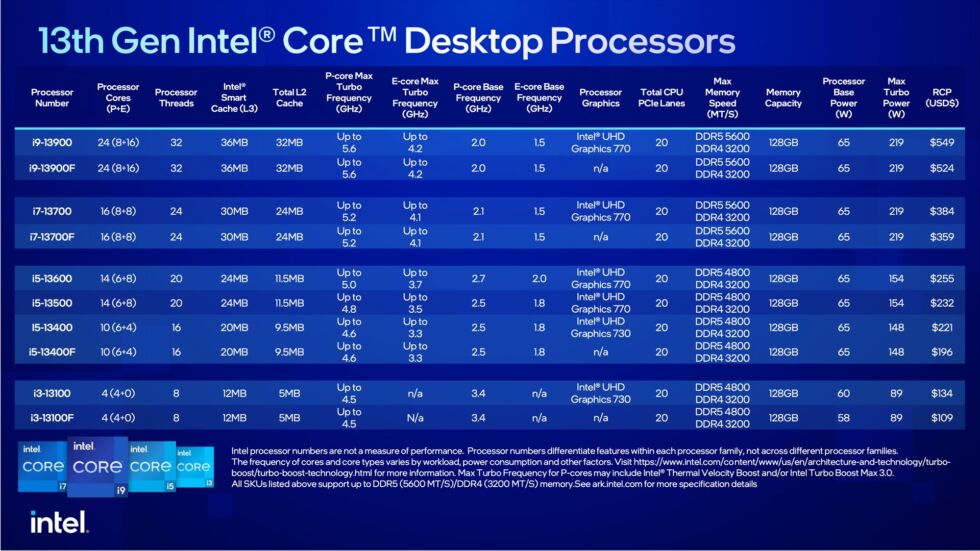New 13th-gen Intel Core desktop CPUs are handing out cores to everyone

Enlarge (credit: Intel)
The 13th-generation "Raptor Lake" Intel Core CPUs we've tested so far have performed well by virtue of throwing lots and lots of cores at most workloads, and the less-expensive processors in the lineup are going to take the same approach. The number of large high-performance P-cores is staying the same, but CPUs from i5 to i9 are all picking up extra E-cores to help with rendering, encoding, and other high-end professional apps that can use every CPU core you give them.
Leaks and other early reports appear to have gotten everything from core counts to clock speeds to cache size mostly correct, so if you've been paying attention, none of today's announcements will come as a surprise. But for people who aren't familiar, the short version is that these are riffs on the 12th-gen Alder Lake CPUs' hybrid architecture, and their designs haven't changed much. They'll also continue to fit into the same LGA1700 motherboards as 12th-generation CPUs, so 600-series motherboards should recognize them just fine after a BIOS update.

The 65 W versions of Intel's new 13th-gen Core CPUs. The Core i9 and i7 variants include more cache per core than the i5 and i3 chips. [credit: Intel ]
Core i9 and Core i7 CPUs all have eight P-cores, but i9 chips come with 16 E-cores while i7 chips come with eight. Core i5 CPUs all come with six P-cores, but the amount of E-cores varies-the i5-13600 and i5-13500 come with eight, while the lowest-end i5-13400 comes with four. The Core i5-12500 and 12400 didn't come with any E-cores at all, so people in the market for a good mainstream CPU for a budget-conscious gaming PC or workstation will benefit even more from the jump between the 12th- and 13th-gen chips. The Core i3 remains the only CPU in the lineup with no E-cores, though their four P-cores should still do just fine for office work and low-end gaming desktops.